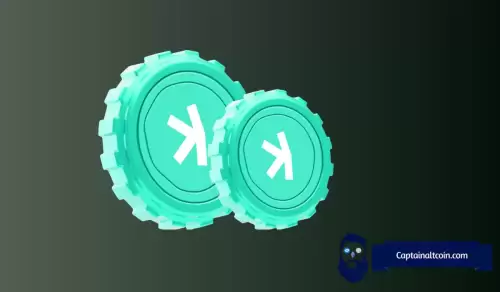 |
|
 |
|
 |
|
 |
|
 |
|
 |
|
 |
|
 |
|
 |
|
 |
|
 |
|
 |
|
 |
|
 |
|
 |
|

Solana (SOL) has emerged from one of its most turbulent periods to date.
Stress-tested in Q1 2025 by an unprecedented wave of memecoin launches on platforms like Pump.fun, the network faced both extraordinary transaction volume and congestion. It saw tens of thousands of new tokens like TRUMP (for former President Donald Trump) and MELANIA (for Melania Trump) launching in just a few months, bringing billions of dollars on-chain through millions of transactions.
It was a real test of how Solana would perform under pressure. But rather than faltering, the network adapted and improved. From this intense period of on-chain activity, a more resilient blockchain has emerged—one that’s increasingly being seen not as a “memechain” but as a foundational layer for stablecoins and real-world payments.
The memecoin stress test
Memecoins, despite their speculative nature, served a valuable purpose: they pushed Solana’s infrastructure to the limit.
During the January peak, tokens like TRUMP and MELANIA helped drive Solana’s decentralized exchanges to a near-record $40 billion in 24-hour trading volume. Together, these two meme tokens reached a combined fully diluted valuation (FDV) of nearly $70 billion—larger than many publicly listed companies. This sent the daily trading volume on Pump.fun past the $5 billion mark, which is higher than Coinbase.
This onslaught did expose certain issues: validators hit compute limits, RPCs throttled, and trading bots struggled to keep pace. But, in response, Solana’s core developers shipped staking-weighted Quality-of-Service to prioritize honest traffic, QUIC networking fixes to reduce packet loss, and advanced priority fees so users could cut the line transparently.
In short, the network’s foundational thesis—that better hardware leads to better scalability—held up well under pressure.
Stability over speculation
Now that the memecoin tide has ebbed, the real opportunity is clear. Stablecoins—reliable, dollar-pegged digital cash—are rapidly growing on Solana. The network’s outstanding stablecoin float is now at an all-time high of around $12.7 billion, which is more than double the figure from a year ago and puts it within striking distance of Ethereum’s peak.
Why the influx? Solana is the first L1 that combines sub-second finality, fractions-of-a-cent fees, and battle-tested throughput.
There are no roll-ups, there’s no waiting around, micro-payments are finally economical, and throughput has been thoroughly proven during the memecoin frenzy of Q1. The chain is ready for money markets and payment rails—exactly what mainstream users and regulators require.
Real-world rails are already here
Take USDG, for example. This stablecoin, issued by Paxos Digital Singapore and designed to be compliant with the Monetary Authority of Singapore’s upcoming stablecoin regulatory framework, is now live on Solana, giving fintech firms a way to transfer US dollars globally in seconds for a fraction of a cent. Cheap, final settlement at internet speed is no longer just a theory, but a reality.
And then there’s Franklin Templeton’s OnChain US Government Money Fund. One of the world’s largest asset managers is tokenizing money-market shares on Solana because the chain’s throughput and custody tooling already feels familiar to traditional finance operations teams.
Collectively, these heavy hitters aren’t chasing memes; they’re chasing the $20 trillion global payments market that Statista pegs for 2025. If even 1% of that lands on Solana, it would eclipse today’s entire crypto market cap—and it’s the stability of these new rail-builders that will decide the volume.
Firedancer: The next upgrade
There’s more good news in the pipeline, too. Later this year, Jump Crypto’s independent validator client, Firedancer, lands on mainnet, which promises 50x faster block propagation and a design ceiling of 1 million transactions per second.
For stablecoin issuers and payment providers, Firedancer could be a game-changer: it offers deterministic finality, even during Black Friday-level transaction spikes. For Solana builders, meanwhile, the upgrade is the green light to aggregate liquidity across a wide range of automated market makers, order-book DEX, and RFQ venues without any throughput constraints.
A call to builders
Memecoins were a stress test. Stablecoins are the real opportunity. For developers working on wallets, payment apps, remittance tools, or trading infrastructure, Solana is optimized and ready, and now the next phase begins. In fact, it wouldn’s be too far-fetched to say that this is what the blockchain has been preparing for all along.
Where memecoins generated attention, stablecoins promise adoption. Solana has shown it can handle volume, and with Firedancer on the horizon, it
免責聲明:info@kdj.com
所提供的資訊並非交易建議。 kDJ.com對任何基於本文提供的資訊進行的投資不承擔任何責任。加密貨幣波動性較大,建議您充分研究後謹慎投資!
如果您認為本網站使用的內容侵犯了您的版權,請立即聯絡我們(info@kdj.com),我們將及時刪除。
-

-

- IOTA,雲採礦和環保的加密貨幣:紐約投資者的拍攝
- 2025-08-06 09:18:27
- 在加密貨幣世界中探索IOTA,雲採礦和環保實踐的交集。發現像IOTA礦工這樣的平台如何塑造數字資產投資的未來。
-

- Kaspa(KAS)價格預測:8月6日 - 它會破裂嗎?
- 2025-08-06 09:00:00
- 分析Kaspa在8月6日的價格運動,檢查了主要的支持和抵抗水平,並探索了潛在的看漲和看跌方案。
-

-

- PI網絡,持有人和市場動盪:導航加密風暴
- 2025-08-06 08:03:20
- 在市場波動中分析PI網絡持有人的彈性以及對加密空間的更廣泛含義。
-

-

- 超流動性API故障:退款和警告性故事
- 2025-08-06 08:00:15
- Hyperliquid最近的API問題引發了辯論:退還用戶的“基本禮節”或“超越”?另外,仔細觀察炒作的恢復和揮之不去的謹慎。
-

-

- Dogecoin Price Outlook 2025:吠叫正確的樹?
- 2025-08-06 08:00:00
- Dogecoin是否將到2025年捲土重來?分析專家預測和市場趨勢,以預測Doge的潛在復興。






























































